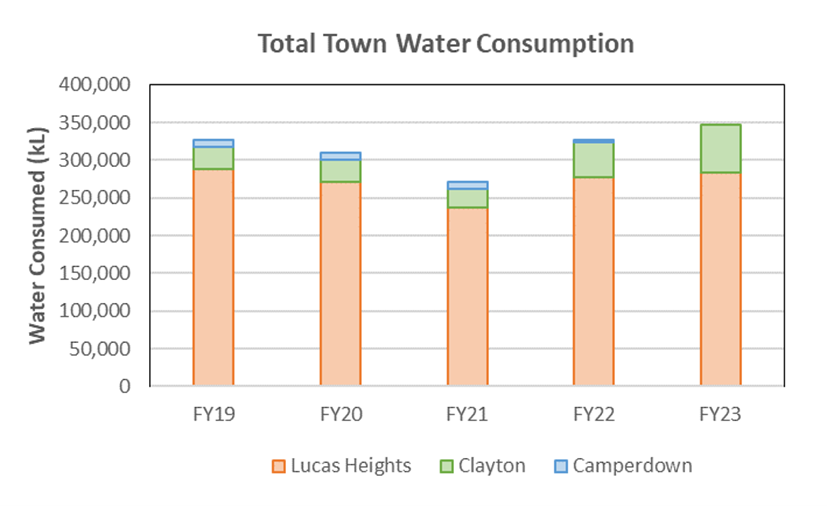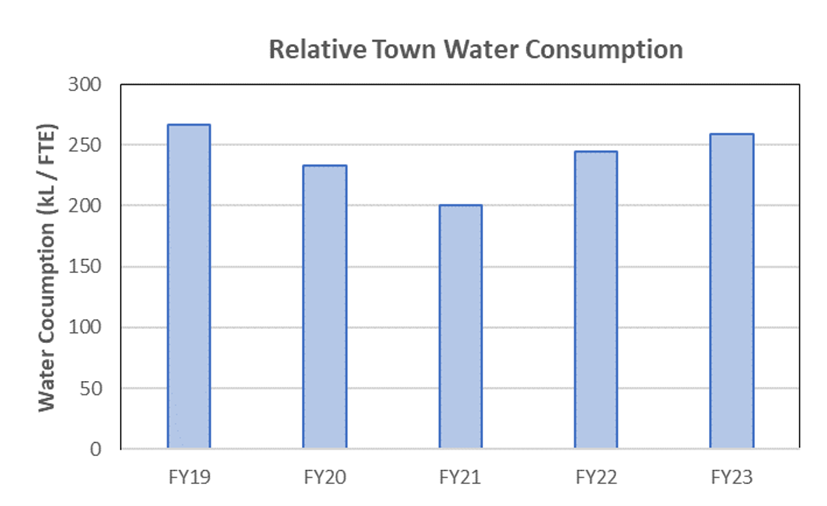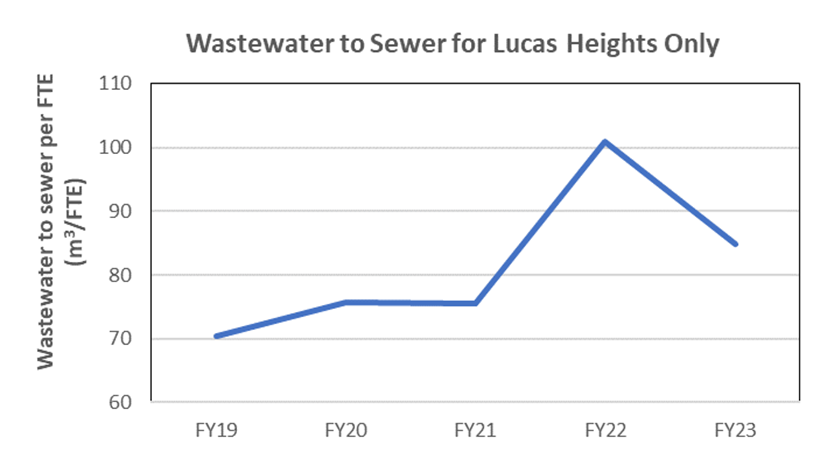

Water usage and discharges
Water Usage
The primary use of water at ANSTO is the OPAL cooling water circuit, which typically accounts for ~70-80% of town water consumption. This water needs to be of a sufficiently high quality to prevent corrosion and scaling of the secondary cooling system, necessitating the use of town water.
Town water is also essential for other purposes across the campuses including use in chiller and air conditioning units, laboratories and general staff consumption.
Water consumption at the Lucas Heights campus in FY2023 was comparable to that in FY2022, however water consumption at the Clayton campus increased by about 36% in FY2023. This increase is likely from two different contributing causes: 1) leak from the water main, which has been rectified, and 2) the general increased humidity over the period, which has been reflected in an increased water demand for the site cooling towers.
ANSTO has installed rainwater tanks with a capacity of about 275,000 L. These are primarily used to irrigate gardens, the sports field and for some areas that use rainwater for operational activities.
ANSTO is investigating options to capture and better utilise rainwater through future developments at its campuses.
Water Usage and Discharge table (FY2022 vs FY2023)
Water usage | Units | FY2022 | FY2023 | Change on previous year (%) |
|---|---|---|---|---|
Town water consumption | m3 | 326,802 | 346,489 | 6 |
| m3/FTE | 245 | 259 | 6 |
Wastewater Discharged to Sewer | m3 | - | 40,619 | - |
Wastewater Discharged to Trade Waste | m3 | - | 59,157 | - |
Total Wastewater Discharged | m3 | 118,306 | 99,776 | -16 |
| m3/FTE | 0.09 | 0.07 | -16 |

Total Town Water Consumption for three campuses FY2019 - FY2023

Relative Town Water Consumption FY2019 - 2023
Wastewater
- The volume wastewater discharged in FY2023 was about 16% less than that in FY2022. This is likely due to lower volumes of rainwater entering the effluent system (rainfall at Lucas Heights was 16% lower in FY2023 than in FY2022).
- In July 2022, ANSTO commissioned a new trade waste effluent pipeline to discharge effluent from its Lucas Heights campus into the Sydney Water network at Barden Ridge. Sewerage and wastewater from non-operational areas will continue to be discharged via the existing pipeline, connecting to the Sydney Water network at Engadine.
- ANSTO has actively been working to rectify these stormwater ingress issues, with opportunities for improvement continuing to be identified and prioritised.

Wastewater to Sewer - Lucas Heights only FY2019 - FY2023
Legend
| kL | kilolitre (1,000 litres) |
|---|---|
| FTE | Full-time staff equivalent attendance |
| m3 | cubic metres |